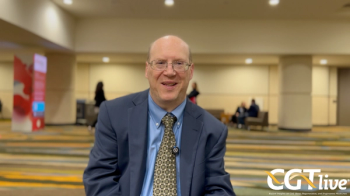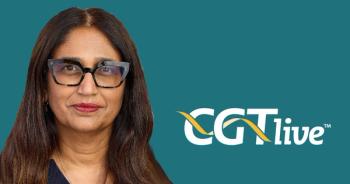
Bart P. Leroy, MD, PhD, on Improving Light Sensitivity, Quality of Life With Luxturna
The head of the Department of Ophthalmology at the Center for Medical Genetics, Ghent University Hospital, discussed the main takeaways of a post-marketing study on the gene therapy.
“[P]atients are navigating in conditions where they were never able to see anything before—so much so that when people now go out, during a sunny day, they start wearing sunglasses... Like for example here in New Orleans, with highly intense sunshine, I have to wear sunglasses to be comfortable—and that's what they say as well. So I think the main takeaway is it does work. It works as intended. And there are no surprises at the level of safety, as well.”
Spark Therapeutics’ voretigene neparvovec (Luxturna) was approved by the FDA in December 2017 and by the European Medicines Agency (EMA) in 2018 for the treatment of inherited retinal dystrophy related to mutations in the RPE65 gene.1,2 The FDA approval was based in part on the results of a pivotal phase 3 clinical trial (NCT00999609) which evaluated the efficacy and safety of the treatment.
Findings from a post-marketing study intended to confirm the results of this trial in a real-world setting
In an interview with CGTLive™, Bart P. Leroy, MD, PhD, the head of the Department of Ophthalmology at the Center for Medical Genetics, Ghent University Hospital, who co-authored the poster, discussed the implications of
REFERENCES
1. FDA approves Spark Therapeutics’ LUXTURNA™ (voretigene neparvovec-rzyl), a one-time gene therapy for patients with confirmed biallelic RPE65 mutation-associated retinal dystrophy. News release. Spark Therapeutics. December 19, 2017. Accessed April 26, 2023. https://sparktx.com/press_releases/fda-approves-spark-therapeutics-luxturna-voretigene-neparvovec-rzyl-a-one-time-gene-therapy-for-patients-with-confirmed-biallelic-rpe65-mutation-associated-retinal-dystrophy/
2. European Commission approves Spark Therapeutics’ LUXTURNA® (voretigene neparvovec), a one-time gene therapy for inherited retinal disease caused by confirmed biallelic RPE65 mutations. News release. Spark Therapeutics. November 23, 2018. Accessed April 24, 2023. https://sparktx.com/press_releases/european-commission-approves-spark-therapeutics-luxturna-voretigene-neparvovec-a-one-time-gene-therapy-for-inherited-retinal-disease-caused-by-confirmed-biallelic-rpe65-mutations/
3. Hertens L, Cauwenbergh CV, den Broeck FV, et al. Results of Belgian patients with RPE65-related inherited retinal dystrophy 6 months after treatment with voretigene neparvovec. Presented at: Association for Research in Vision and Ophthalmology (ARVO) 2023 Annual Meeting. April 23-27, 2023; New Orleans, LA. Abstract #762 – C0363
Newsletter
Stay at the forefront of cutting-edge science with CGT—your direct line to expert insights, breakthrough data, and real-time coverage of the latest advancements in cell and gene therapy.











































